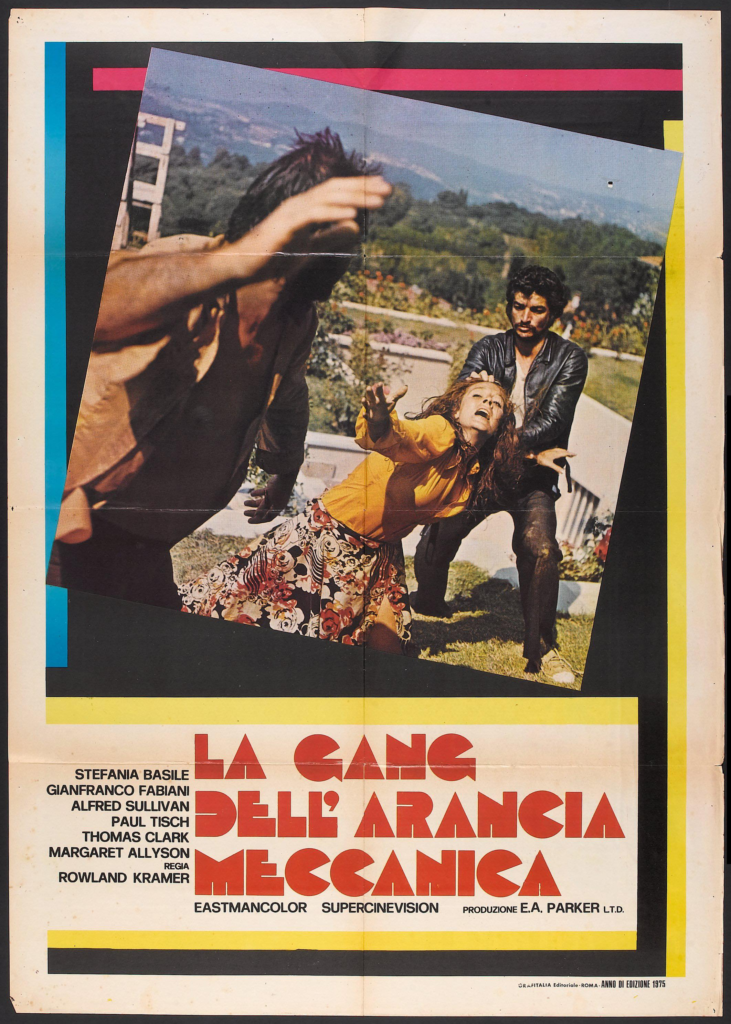Ponying the Slovos began as an attempt to define Nadsat, the invented language at the heart of Anthony Burgess’s A Clockwork Orange, and then examine how translators dealt with it. We believed that by isolating and examining the translation of an invented language, which does not emerge from an organic culture, it would help to reveal translator’s various strategies for translation more obviously.
To do this, we applied parallel translation corpus methodologies, which we explained in a recent post. So far, we’ve done in-depth studies of a range of European translations, particularly French, Spanish, and some comparative studies too. (There’s a full list of our research outputs here.)
What we’ve been looking forward to was seeing how these results compared to translations into languages that were NOT part of the Indo-European family of languages. Specifically, we wanted to look at Turkish, for a number of reasons.
Firstly, we have some familiarity with Turkish and Turkey. Secondly, Turkey is culturally extremely similar to European cultures, with the major distinction (other than nominal religious affiliation) being that the Turkish language is the most widely spoken Turkic language, a family of around 35 different Eurasian languages which are very different from Indo-European ones in a range of ways. We would like to thank our good friend, the linguist Hülya Mısır, for her assistance with solving what turned out to be a rather curious mystery.
It turns out that A Clockwork Orange has been translated twice into Turkish. The first translation was done in 1973 by Aziz Üstel, a fascinating character who remains a significant public personality in Turkey. Among other things, he is a TV star, prolific writer, and a public figure. He was even once a general manager for Galatasaray football club. The second was done in 2007 by Dost Körpe, an academic, writer and translator of English Romantic poetry as well as Science Fiction.

This raised the possibility of some interesting comparative studies, as we did with the Spanish translation, and even a transmedial comparison, since A Clockwork Orange had already been (very loosely) adapted into a Turksploitation movie in the 1974, Çirkin Dünya (Ugly World.)

This was later released in Italy as The Gang of A Clockwork Orange, complete with fake English and Italian cast names, as if to imply that it was an official sequel to Stanley Kubrick’s 1971 adaptation. (We’d like to thank the Swiss Anthony Burgess scholar Cristian Pasotti for this information and for the poster below.)
So, since it was easier to obtain in electronic form to work some linguistic analysis upon, we began with the later translation, that of Dost Körpe. And we found something very interesting. It was around a third SHORTER than the original novel. Now, this is very unusual for a literary translation. Habitually, they tend to be LONGER, not shorter, because translators tend to expand their versions to accommodate and explain nuances in the original texts which cannot be directly or succinctly translated. Something big appeared to be missing, and it didn’t take long to find out what.
There was no Nadsat. Barely a slovo, in fact. The invented language from Burgess’s original text had almost if not entirely vanished. This raised some alarm bells, since we already knew that there was no Nadsat in Çirkin Dünya. So then we dug a little deeper and discovered that there was no Nadsat in Üstel’s translation either.
This is not the only such case we’ve discovered, of course. The first Italian translation adapted Nadsat into Milanese dialect rather than an invented slang, as Burgess himself noted at the time in an article entitled “Bless Thee, Bottom”, which may now be read in his posthumous essay collection The Ink Trade, as edited by Will Carr. And in an act of apparent laziness, the first Russian translator (published in Tel Aviv since the Soviet Union proscribed the novel), seemed to be pleased to find that much of the book was already writte in a sort of Russian and did not bother to incorporate any aspect of an invented language at all.
However, there have been other translations into both languages since (indeed a new Italian translation has just been published in February 2022). But this is not the case in Turkey. Turkish readers have therefore never experienced the creativity and alienation carefully built into A Clockwork Orange by Anthony Burgess, because NONE of the translations have included any Nadsat.
So what DID they do? We’ll tell you next time!
